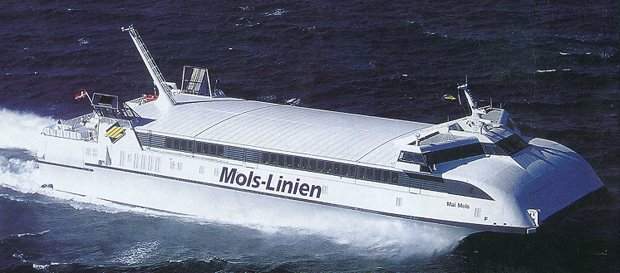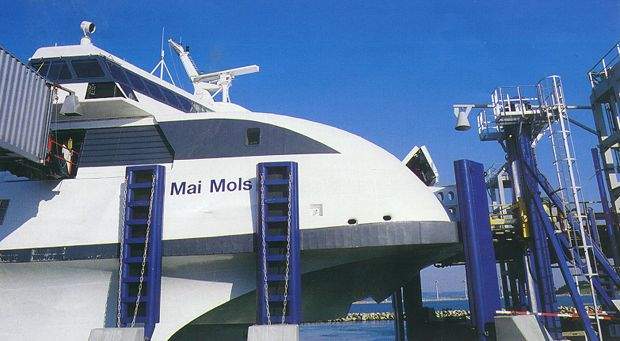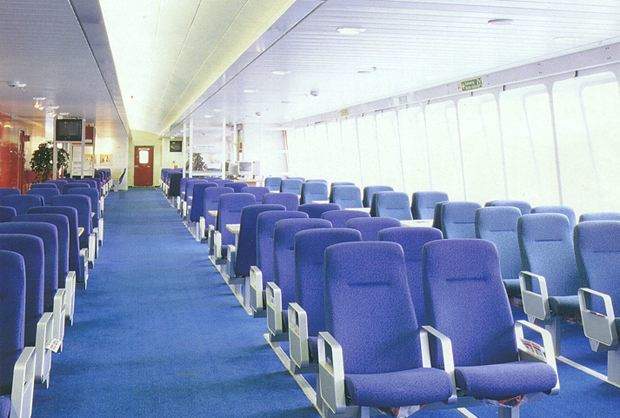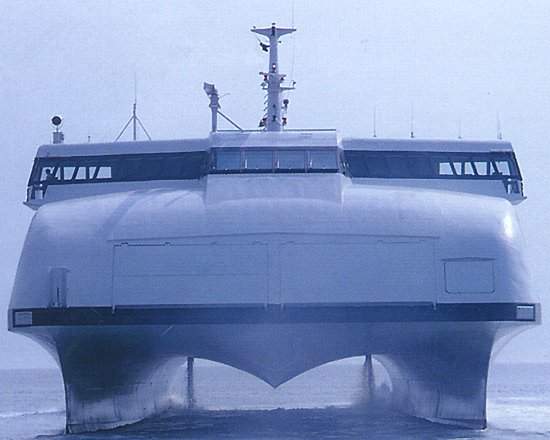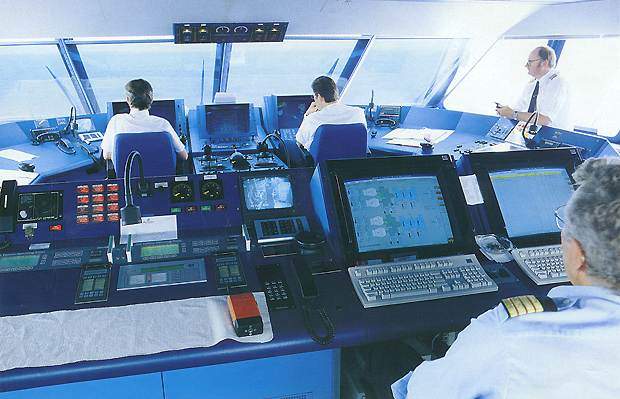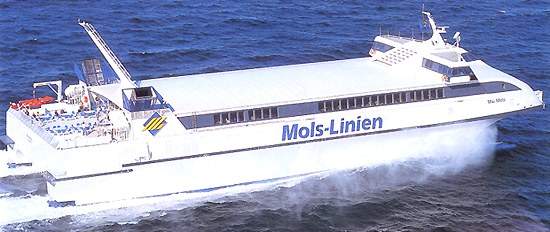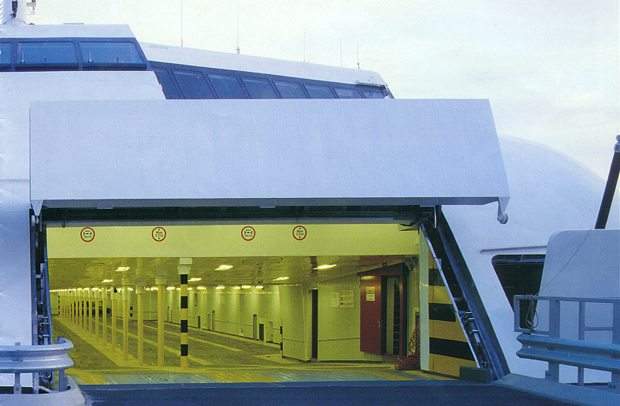The Mai Mols and its sistership, Mie Mols, are second-generation Seajet Swath catamarans. They are operated on the 25.1 miles route between Ebeltoft and Sjeallands Odde, Denmark, by Mols-Linien. Mai Mols was built by the Danish shipbuilder, Danyard Aalborg in 1996.
DESIGN
The Mai Mols is a Seajet 250 semi-swath (small waterplane area, twin hull) design. The semi-swath concept was selected for seakeeping and a smooth ride. Its waterplane area is larger than that of a typical swath configuration and smaller than that of a catamaran. Relative to a catamaran, therefore, wave-induced motions are expected to be less, while the increased plane compared to a swath should dampen heave and pitch movements, lowering the acceleration forces imposed on passengers.
It is 76.1m in length and has a beam of 23.4m, fabricated of all-welded aluminium. Each hull has an extended bulbous forefoot with a central bow section between the hulls to provide additional buoyancy and reduce vessel slamming when it encounters abnormally high waves. The fully integrated hulls and superstructure have been developed to withstand the forces generated when running at speeds in excess of 40 knots and in sea conditions of 2.5m significant wave height, or at 20 knots with a 4m significant wave height. Transverse web frames and bulkheads support the longitudinal stringers to withstand hull bridging forces. Each hull consists of six 12m-long prefabricated sections. The deck structure was also made up of prefabricated sections and lowered into place.
The Mai Mols is a particularly quiet craft, easily meeting 35 dB, measured 270m away from the vessel at full speed. The vessel has a hydraulic mooring system. In place of conventional lines, two rams are used to hold the vessel in place during loading and unloading.
FACILITIES
The Seajet has two decks – an upper deck for 450 passengers and a lower deck for cars. Stairways to the car deck are located either side forward and aft and there is a lift for the disabled. The crew rest room is located in the forward end of the passenger deck. The bridge is located immediately above the bows.
The passenger deck is arranged on one level. The deck is 23m wide, closed forward and leading to an open deck aft. Amidships, facilities include a transverse pantry with a combined shop/cafe opening to the front, as well as an aft-facing restaurant and buffet. The Mai Mols has a total of 490 seats. The forward area is laid out with groups of chairs, two or three abreast. A number of the seats are arranged around tables. There is a large video screen on the forward bulkhead that gives passengers a glimpse of the route ahead.
Up to 120 cars can be accommodated on the single ro-ro deck, which has an overall maximum headroom of 2.3m. Two lines of pillars extend over the length of the garage deck, dividing the ro-ro spaces into 2-3-2 vehicle lanes. The deck structure is generally limited to wheel-base weight of 1,000kg, although two are strengthened to 1,750kg. The absence of pillars and the width of the vessel allow a 10-12min vehicle discharge rate. The vehicles exit through a two-lane, 6m-wide door in the starboard quarter at the extreme aft end of the vehicle deck.
PROPULSION
The propulsion system consists of two LM1600 aeroderivative gas turbines that give a total power output of 24,800kW. Located in each hull, the 12,400kW engines drive a Kamewa 112 waterjet via a single Maag reduction gearbox. Fuel consumption is 241g/kW/h at a maximum continuous output of 5.5t/h.

